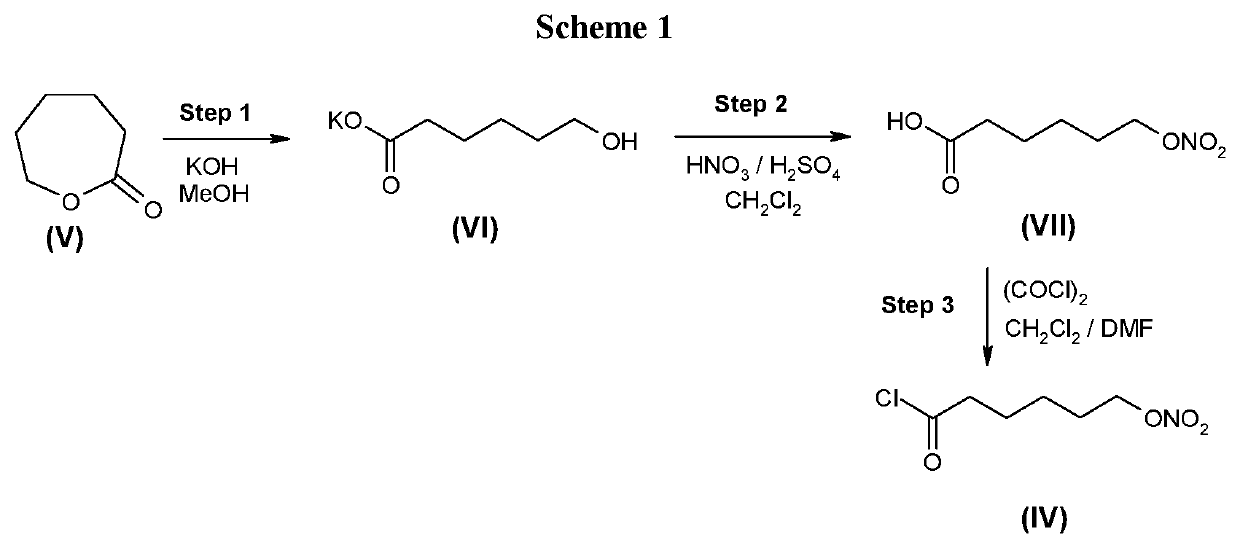Process for the preparation of a nitric oxide donating prostaglandin analogue
a prostaglandin and nitric oxide technology, applied in the field of large-scale preparation of hexanoic acid, 6(nitrooxy), can solve the problems of difficult removal, high cost, impurity formation,
- Summary
- Abstract
- Description
- Claims
- Application Information
AI Technical Summary
Benefits of technology
Problems solved by technology
Method used
Image
Examples
example 1
[0065]Synthesis of hexanoic acid, 6-(nitrooxy)-, (1S,2E)-3-[(1R,2R,3S,5R)-2-[(2Z)-7-(ethylamino)-7-oxo-2-hepten-1-yl]-3,5-dihydroxycyclopentyl]-1-(2-phenylethyl)-2-propen-1-yl ester (I) (Batch 1)
[0066]Synthesis of 6-(nitrooxy)hexanoyl chloride (IV)
Step 1: Synthesis of 6-hydroxyhexanoic acid potassium salt (compound (VI))
[0067]A solution of potassium hydroxide (131.9 g, 0.98 eq.) in methanol (1250 ml, 5 vol.) was prepared under cooling at 15° C. to 20° C. 25 0 g of 2-caprolactone (1 eq.) and methanol (625 ml, 2.5 vol.) was introduced in a 3 L three-necked round-bottomed flask. The mixture was stirred until dissolution. A methanol potassium hydroxide solution was added at 5° C. to 20° C. within 0.5 hour. The mixture was stirred for 4.5 hours at 15° C. to 20° C. The reaction mixture was concentrated under vacuum (at a temperature equal to or below 40° C.) to give crude 6-hydroxyhexanoic acid potassium salt (489.55 g). The crude was re-slurred in methyltertbutyl ether (1250 ml, 5 vol.) ...
PUM
| Property | Measurement | Unit |
|---|---|---|
| Temperature | aaaaa | aaaaa |
| Fraction | aaaaa | aaaaa |
| Electrical conductance | aaaaa | aaaaa |
Abstract
Description
Claims
Application Information
 Login to View More
Login to View More - R&D
- Intellectual Property
- Life Sciences
- Materials
- Tech Scout
- Unparalleled Data Quality
- Higher Quality Content
- 60% Fewer Hallucinations
Browse by: Latest US Patents, China's latest patents, Technical Efficacy Thesaurus, Application Domain, Technology Topic, Popular Technical Reports.
© 2025 PatSnap. All rights reserved.Legal|Privacy policy|Modern Slavery Act Transparency Statement|Sitemap|About US| Contact US: help@patsnap.com



